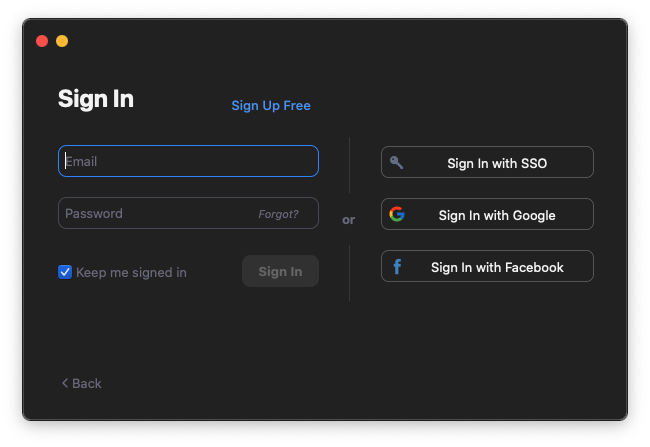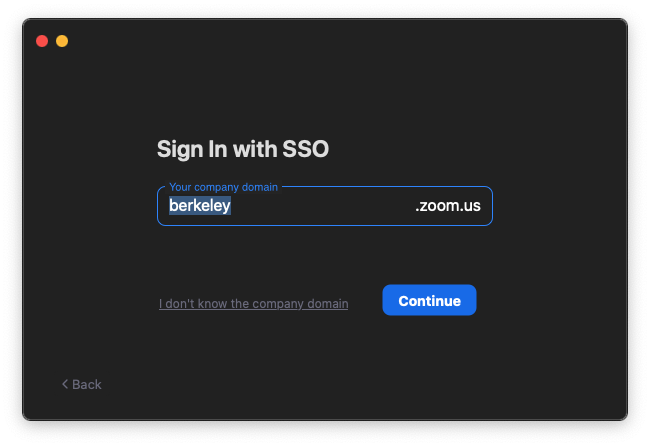Using Zoom
Installation
Download the desktop application from https://zoom.us/download. The mobile versions can be installed from Apple's App Store and Google's Google Play.
Upgrading
Zoom displays a notification when there is a new update within 24 hours of logging in. You can also upgrade by downloading and installing the latest version, the same as if you were installing it for the first time. To check for updates, make sure you're logged into the desktop app and on Mac click the zoom.us menu > "Check for Updates...". On PC or Mac, click your profile photo then click "Check for Updates...".
Logging In
When prompted by the desktop app to login, choose the "Sign In with SSO" option. SSO stands for "single sign-on" and will use CalNet for authentication.

Then enter "berkeley" as the domain:

Settings
You can configure some Zoom settings within the desktop or mobile applications. Other preferences must be set online under https://berkeley.zoom.us/profile. Some of the settings can be dynamically altered during the meeting, however others require that you stop and restart the meeting.
Profile
At https://berkeley.zoom.us/profile, if you set "Personal Link" for an easy to remember URL for your meetings, do not use it for your courses because it becomes an easier target for zoom bombers.
Instructional Settings
The settings below can be changed at https://berkeley.zoom.us/profile/setting, and may be most useful when hosting course-based meetings.
Under Settings > Meeting > Schedule Meeting
- Turn off "Participants video" to start meetings with participant video off. Participants can change this during the meeting.
- Turn on "Only authenticated users can join meetings" and "Only authenticated users can join meetings from Web client" to accurately identify participants. This prevents people without campus accounts from joining meetings. It is not appropriate if you are intentionally hosting participants who do not have campus accounts such as external collaborators. If you enable this, you may wish to also enable the equivalent option for recordings, documented below.
- Turn on "Require a password when scheduling new meetings". This can provide some additional security, though once the meeting password is shared via the Zoom invitation, there is a greater chance that it can be shared to those who have not been invited by you.
- Turn on "Mute participants upon entry".
Under Settings > Meeting > In Meeting (Basic)
- Turn off "Play sound when participants join or leave".
- Set "Screen sharing" > "Who can share?" to "Host Only" if you want to prevent all participants from sharing.
- Turn off "Allow participants to rename themselves". (as of Zoom 4.6.10)
Under Settings > Recording
- Turn on "Automatic recording" if you always want to record meetings that you host.
- Turn on "Only authenticated users can view cloud recordings"
Additional Resources
- Settings for Preventing Zoom-Bombing [IST]
- Securing Zoom Recordings [IST]
- Toolkit for Creating a Healthy Virtual Environment [Division of Equity and Inclusion]
- Zoom and Accessibility [UCOP]